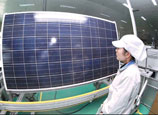
At the height of the previous boom, 11 reactors were built in China in 2011.
Sun said CNNC was open to the possibility of developing further nuclear stations in inland regions, as technically speaking, building stations in inland areas is no different to building them along the coast.
He added that nuclear construction will continue in traditional areas and one or two inland sites could be studied.
In a sign of the eagerness of inland provinces to develop nuclear stations, Hunan officials have made the construction of the Taohuajiang station their No 1 proposal during the ongoing annual session of the National People's Congress.
Feng said previous expansion of nuclear stations had been too bold, and that some of the potential sites were chosen without enough planning.
Feng added: "Nuclear power projects carry a very slim chance of an accident, but if they do happen, the consequences can be disastrous. So every project should be very carefully examined."
Sun also disclosed that China has been maintaining its pace of research into fourth-generation nuclear reactor technology.
The country has two experimental 4G nuclear reactor sites, both moving from the experimental phase to the model phase. The final stage in a development is the commercial phase.
"The international community has set a target that by 2030 to 2035, commercial 4G reactor technology should be available.
"We will be ready to reach the commercial phase by 2030, which is the same, or a little earlier than the international pace," Sun said.

















 Shanghai Disney Resort unveils resort concept
Shanghai Disney Resort unveils resort concept


![]()
